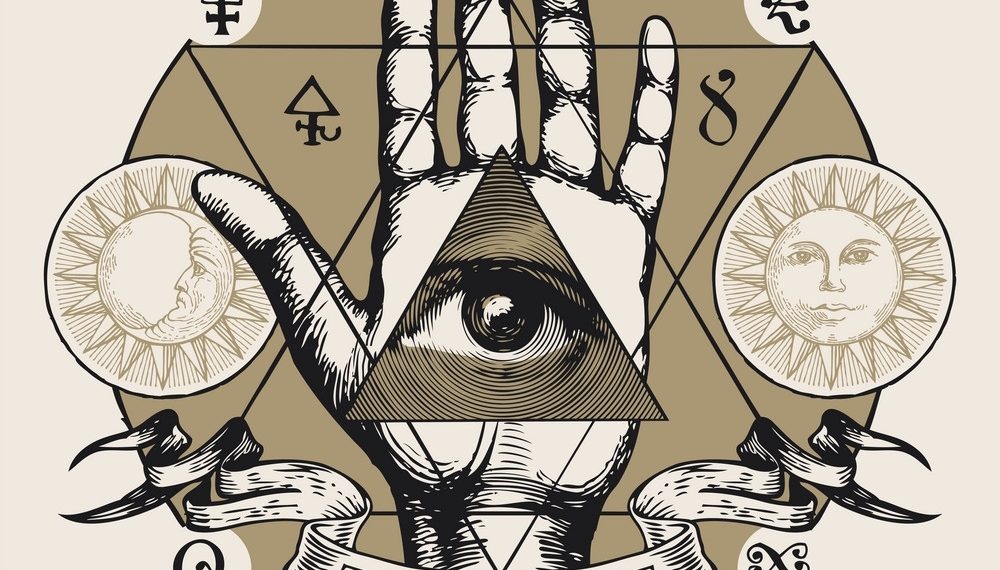Richard Cavendish’s occult book, The Black Arts, primarily focuses on Jewish mysticism (Gnosticism, Zoroastrianism, Kaballah, etc.) and the rituals in the Lesser Key of Solomon. However, it contains a chapter toward the end of the book entitled the Origins of Satan, in which Cavendish goes into detail about the etymology and history of the character of Satan in Christian literature.
“In [The Biblical story of Job], the satan is determined to destroy Job’s credit with God and he is the direct instrument of Job’s punishment. But he acts only under God’s instructions and he is felt to be performing a useful function. He tries to bring to the surface the wickedness inherent in men. … It was from this notion of an implacable angel who accuses men and punishes them that the Devil of medieval and modern Christendom eventually grew.
…
It was natural for people to wonder how the satan, originally a valued if unpleasant official of God’s court, had fallen from grace to become God’s enemy. One explanation was found in the story of the Watchers, the germ of which appears in Genesis.”
The Story of the Watchers appears in various forms, and it goes something like this: the angels in God’s court were jealous of mankind. God had not given them wives or children, for they were immortal and needed no offspring. As mankind grew, the angels saw their daughters to be fair and sought to take them as their own. Lead by Azazel (or, in some passages, Semjaza), one group of angels two hundred strong, called the order of the Watchers or the sleepless ones, came to Earth by way of Mount Hermon. There, they “defiled themselves with them.” Azazel taught men to craft weapons of war; the other angels taught their new wives charms, enchantments, botany, and how to use cosmetics to further tempt God’s court.
The children of the human wives and their angelic husbands became giants, whose insatiable hunger drained the land of its resources. God sends Raphael to imprison Azazel in the desert until the end of time, and the Watchers are forced to bear witness as the giants, their children, are slain. Finally, God’s court binds the Watchers to the valleys of Earth, where they are cursed to wander until the end-times, after which they are to be cast into an abyss of fire.
No doubt the medieval fascination with female witches’ sexual congress with demons and the Devil Himself derives from this story.
The Story of the Watchers remained the dominant narrative about the origins of demons and evil in Judeo-Christian thought until early Christian Fathers rejected it from the canon. St. Augustine, for example, cited a passage of Isaiah to explain the true origins of Satan: as a great archangel who rebelled through pride.
“‘How art thou fallen from heaven, O Lucifer, son of the morning! How art thou cut down to the ground which didst weaken the nations! For thou hast said in thine heart, I will ascend into heaven, I will exalt my throne above the stars of God: I will sat also in the mount of the congregation upon the sides of the north: I will ascend above the heights of the clouds; I will be like the most High. Yet thou shalt be brought down to hell, to the sides of the pit.’
The passage in Isaiah may refer to a legend of the beautiful morning star who walked in Eden, blazing in jewels and light, and in his insane pride attempted to rival God. ‘Lucifer, son of the morning’ is in Hebrew Helel ben Shahar, ‘day-star, son of the dawn.’ The Jews, Arabs, Greeks and Romans identified the morning star (the planet Venus) as male. In Greek it was called phosphoros and in Latin lucifer, both words meaning ‘light-bearer.’ It has been suggested that the story of Lucifer may have been based on the observation that the morning star is the last proud star to defy the sunrise, and the belief that it must have been punished for its defiance.”
By the first century A.D., the story of the Watchers had been combined with the passage in Isaiah, resulting in the nuanced version of Satan as he appears in later texts – like John Milton’s Paradise Lost – despite little Biblical precedent existing to define Him.
“People who worship the Devil do not regard him as evil. To the Satanist the supernatural being who is the Enemy of Christendom is a good and benevolent god. But the word ‘good,’ applied to the Devil by his followers, does not carry its Christian or conventional meanings. Satanists believe that what Christians call good is really evil, and vice versa, though there is an ambivalence of attitude in Satanism, as in black magic, a perverse pleasure in doing things which are felt to be evil combined with a conviction that doing these things is really virtuous.”


